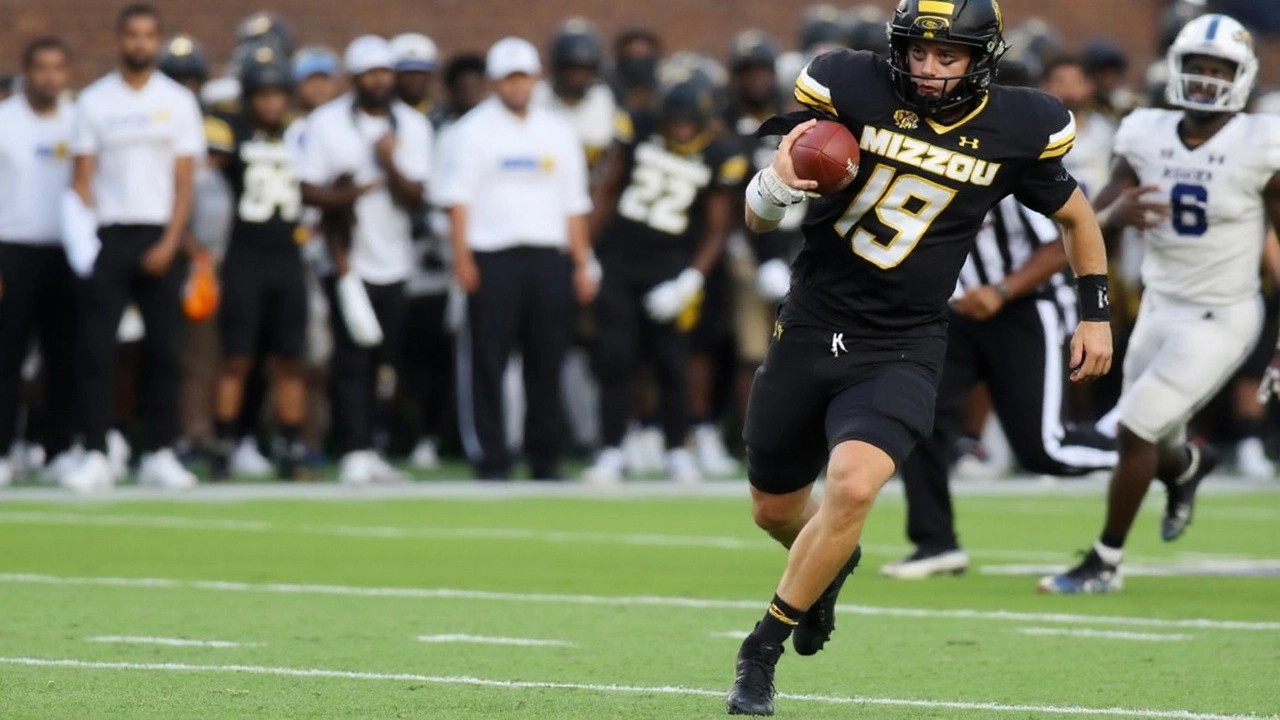A 14-year wait ends for a rivalry that never cooled
Fourteen years is a long time in college football. Coaches cycle through. Players come and go. Rivalries change or disappear. This one never really did. On Saturday, September 6, 2025, Kansas vs. Missouri returns to the football field for the first time since 2011, a 121st meeting that ends the longest gap between games since the series began in 1891.
The setting feels right: Faurot Field in Columbia, a packed early-September slate, and a fan base that has waited more than a decade to welcome the neighbors from the west. It’s Week 2, which means the game will shape how both teams feel about the rest of their season. Official TV and streaming details typically land closer to kickoff, but expect one of the SEC’s broadcast partners to plant this one in a spotlight window.
Why does this pairing still hit a nerve? Because it’s older than the sport itself. The “Border War”—often also called the Border Showdown—traces its roots to 19th-century clashes along the Kansas-Missouri line. Over time, universities took in that history, wrapped it in school colors, and turned it into something you could measure in yards and points instead of scars. It’s part football game, part regional referendum.
Even with the long pause, the memories haven’t faded. Fans on both sides can still tell you where they were for the 2007 classic at Arrowhead Stadium, when a top-five showdown lived up to the billing and Missouri closed it out late. They remember 2011 in Kansas City, the last meeting before Missouri left the Big 12 for the SEC, a conference move that froze the series. The box scores vary, but the themes don’t: big swings, late drama, and decisions on fourth down that linger for years.
So what’s different in 2025? Almost everything around the game. Facilities have been upgraded. NIL and the transfer portal have reshaped rosters. Missouri has spent a decade-plus leaning into SEC speed and size, recruiting against the league’s bluebloods and playing weekly in the sport’s heaviest trench fights. Kansas, under a steady, modern approach, has rebuilt with development and scheme, turning tempo and spacing into weapons while trying to harden the defense enough to win in November.
The stakes fit the moment. In the expanded playoff era, nonconference games with brand power have more value. A win here doesn’t lock in a postseason berth, but it does change the math—especially if either team puts together a strong league run. It also matters in living rooms: Kansas City, eastern Kansas, and western Missouri are recruiting battlegrounds, and this game is a two-hour billboard for families who grew up with split allegiances.
Expect the atmosphere to punch first. Faurot Field sits just over 62,000 seats, and it gets loud when the lower bowl fills. Tailgates will start early. The student sections will be feisty. Security and game ops will work to keep it heated but respectful, but the noise is part of the show. After 14 years, people want to be heard.

What to watch on the field
- The line of scrimmage: Missouri has built its identity around SEC fronts. If the Tigers control early downs, Kansas will face long-yardage situations that compress the field. Flip it, and the Jayhawks’ tempo becomes a problem as drives stack up and defenders tire.
- Explosive plays: Rivalry games often swing on two or three pops—broken tackles, coverage busts, returns that tilt field position. Both staffs script shot plays early. If one hits and the other whiffs, that’s a hidden 7-to-10 points.
- Quarterback poise: Silent counts, edge pressure, and disguised coverages in a hostile stadium can speed up a QB’s clock. The one who handles protection checks and doesn’t hand the ball away on a short field usually wins these nights.
- Red zone choices: These games love controversial fourth-down calls. Analytics lean aggressive inside the 10. Emotion can push it further. Watch how both sides balance chart and gut when the game tightens.
- Special teams: Missouri typically prides itself on coverage units in SEC play, while Kansas has leaned on field position to keep its offense on schedule. One clean block, one shanked punt, one runback can swing a rivalry faster than any scheme tweak.
There’s also the intangible: how both teams handle the first wave of adrenaline. After a 14-year build-up, the opening five minutes can get sloppy—offsides, late hits, early timeouts. The first group to calm down and drive the game back to assignments and technique usually gains control.
For fans, the practical stuff: kickoff is set for Saturday, Sept. 6, 2025, in Columbia. Parking and tailgate rules will be the usual early-season mix—arrive early, expect heavy traffic, and plan for heat. Ticket demand is high for a renewal like this, so secondary markets will be busy. If you’re watching from home, keep an eye out for broadcast details as the season approaches; official carriers will push streaming through their apps once times are locked in. Stick to legal options; piracy won’t just get you a low-quality feed—it can burn you with malware.
Beyond the field, the game’s return says something about where college football is headed. Realignment can break things, but it can also bend them back into place when schools agree that some games matter more than a neat schedule grid. If this one lands the way it should—with passion and just enough chaos—expect administrators to find more windows to keep it going.
Rivalries endure because they carry more than a score. They hold decades of family trips, tailgate recipes passed down, quiet car rides home, and That One Play everyone promises they’ve gotten over but never have. Kansas and Missouri have waited 14 years to add another chapter. Now it’s time to write it.
